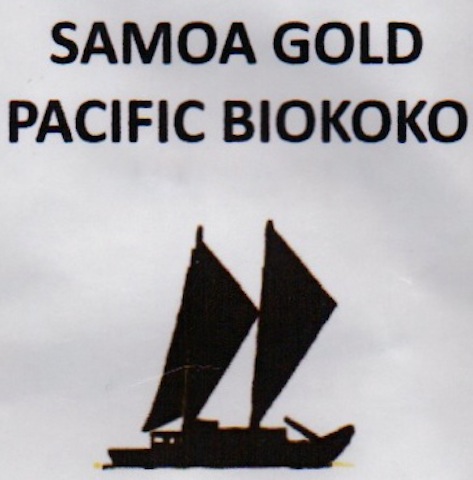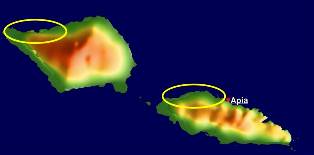 FLAVOR: butter-full, but bitter as well, with fruit overlays
FLAVOR: butter-full, but bitter as well, with fruit overlays
CHARACTERISTICS: a hodge-pod centered around mostly Amelonado with some old growth Criollo receding into the past
Once known as the ‘Navigation Islands’ due to Samoans’ reputation as some of the craftiest seafarers on Earth. No surprise then that the route Theobroma cacáo took to reach these islands was also by the sea.
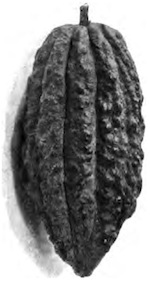
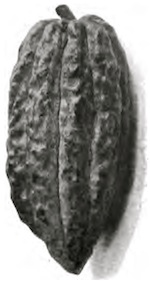 Western mariners from Britain, Germany & America all fought over Samoa for control.
Western mariners from Britain, Germany & America all fought over Samoa for control.
Germans however receive credit for introducing cacáo here in 1883 after colonizing their portion of Samoa with material transplanted from then-Ceylon (now Sri Lanka). A year later more arrived from Java. Both of these were presumably of the Criollo group (or to use a Samoan term, ‘aiga, for extended family), whose pods ranged in color from medium to dark red (a marker for likely Criollo).
Samoa’s cacáo groves are clustered in 2 ‘rain shadows’ along the NW coasts of the 2 main islands that comprise the country – ‘Upolu & Savai’i. These actually experience pronounced dry seasons during which cacáo’s own leaves dry up and fall down. Rather serendipitous… they then provide ground cover so tree trunks & roots stay moist & cool.
There they grow essentially out of lava & rocks — Samoa having been formed by a volcanic hotspot — amidst coconut & banana trees over some rugged terrain. Land that’s difficult to clear; even difficult to walk on.
The quality of Samoan cacáo stems from its rather unique soil composition. Its cacáo regions are calcium rich & potassium deficient. This combination may cause a high cocoa butter content for which the islands have been esteemed.
In 1904 the horticulturist Ferdinand Wohltmann wrote Pflanzung und Siedlung auf Samoa (“Plantation & Settlement in Samoa”). It includes a survey of the island’s cacáo as that time: “It’s always known in Samoa as ‘Criollo’, but quite unlike the Criollo in Trinidad, surpassing it in quality. It’s also unlike the Forastero cacao. In fruit, nibs & form of tree it most nearly resembles the cacao of Guatemala and Colombia.” (NOTE: a century later, Basil Bartley analyzed Wohltmann’s report & believes Trinidad may have been mistaken for Venezuelan Criollo. In any event, the prominence of Sri Lanka & Java in Samoan cacáo means likely lineage to some of the very first trees to leave cacáo’s American birthplace — journeying from Mexico to Oceania / Asia — & may represent the last in the line of its descendants.)
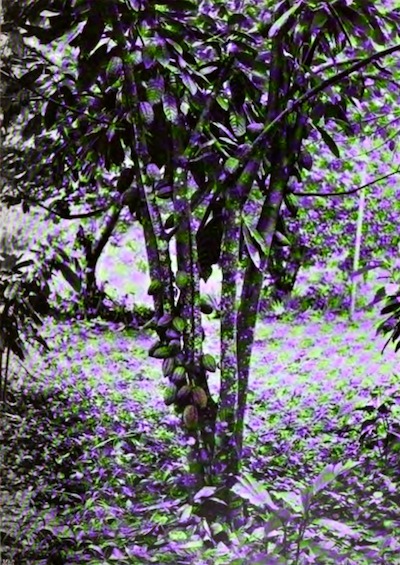 Criollo on Samoa: this tree as well as the 2 pods (above) photographed in 1903 (from Pflanzung und Siedlung auf Samoa [“Plantation & Settlement in Samoa”] by Dr. Ferdinand Wohltmann)
Criollo on Samoa: this tree as well as the 2 pods (above) photographed in 1903 (from Pflanzung und Siedlung auf Samoa [“Plantation & Settlement in Samoa”] by Dr. Ferdinand Wohltmann)
But by the time Ernst Demandt published Samoanische Kakaocultur in 1914 right before Germany would lose this colony in the aftermath of WWI, the situation changed drastically. So-called ‘Forasteros‘ came to dominate & pushed Criollos into the background, found only in older fields.
Hybrids developed between the two & cacáo rumored to hail from Ecuador crept into the mix which some feel offer a unique natural blend & overall quality.
Cacáo all but collapsed here during the 1980s due to the triple hit of declining export prices, quality, & yields. Poor tree management led to decrepit stocks – a situation found in many cocoa-producing countries. In response, solutions called for replanting the island with high-yielding / disease-resistant / drought-tolerant but less flavorful Amelonado types. In some ways this compounded the woes because the perception grew that Samoa’s once premium-grade cacáo were now replaced by average strains fetching a lower price on the commodity market. Shoddy post-harvest practices (fermentation / drying / storage) further aggravated the situation.
Then the twin cyclone events — Ofa in February 1990 & Val in December 1991 –- swept over the islands… spraying a salt breeze that destroyed many trees. They literally blew the industry away.
Today the remnants of some “Trinitario” & the aforementioned Amelonado prevail among the islands’ groves.





